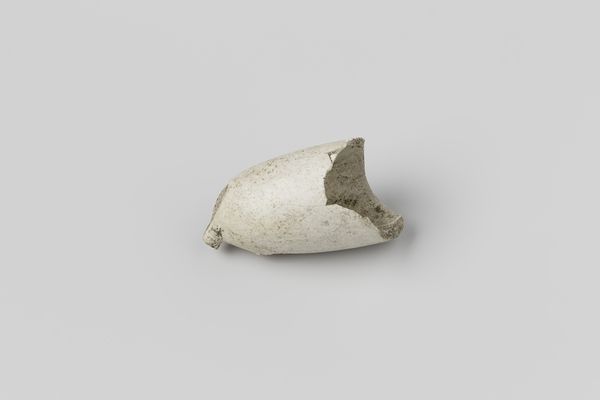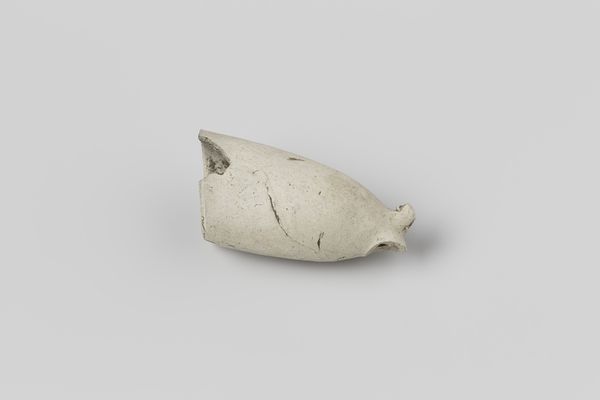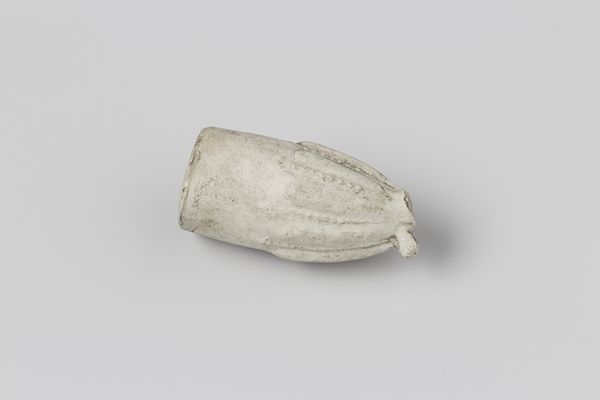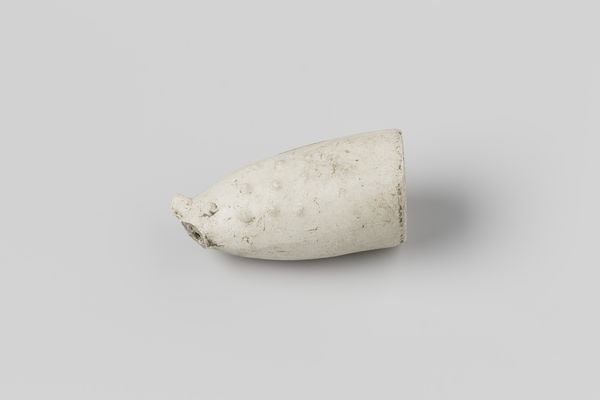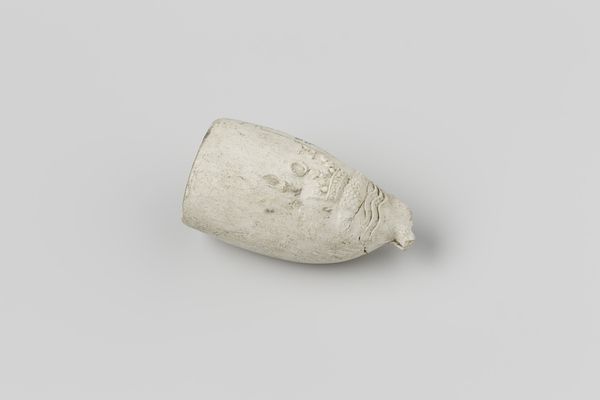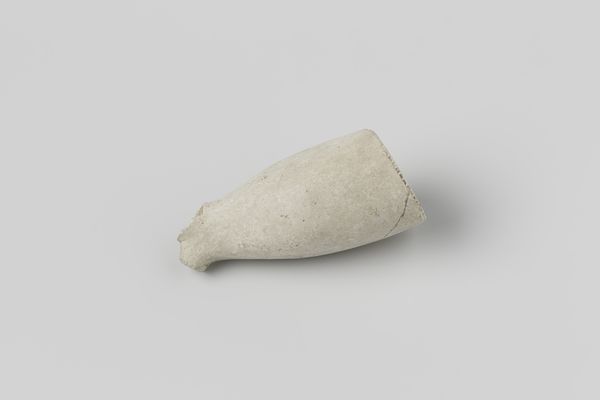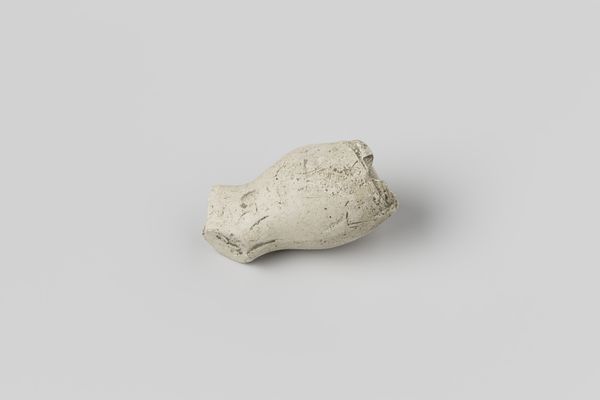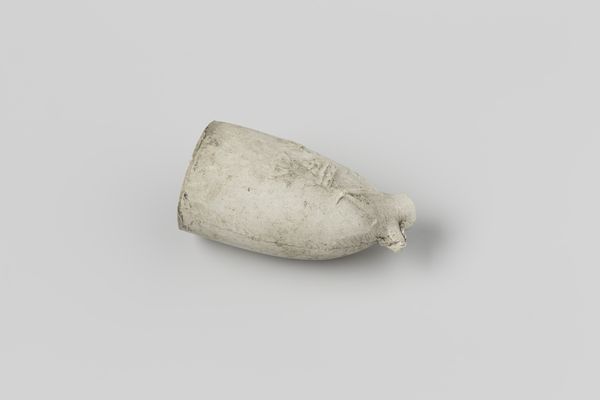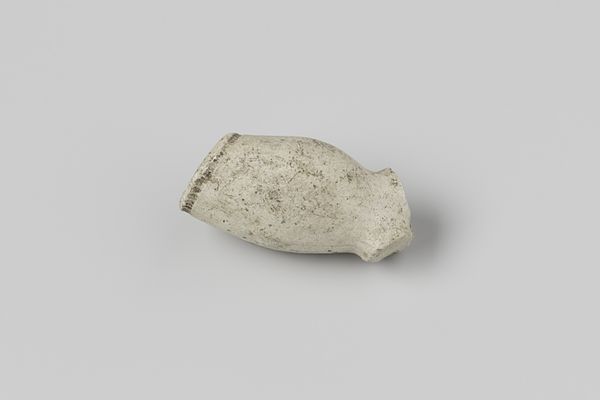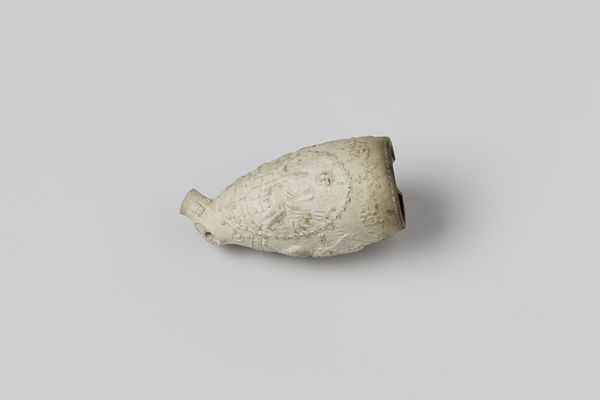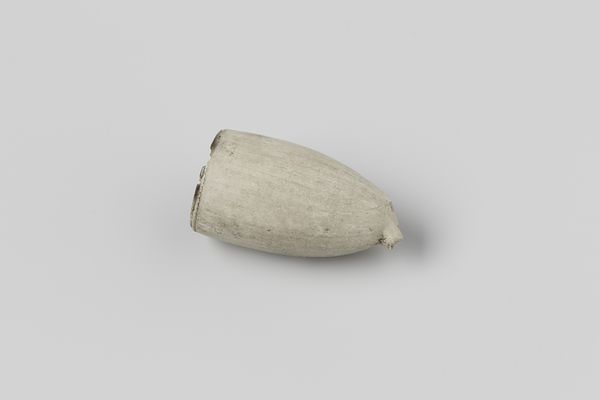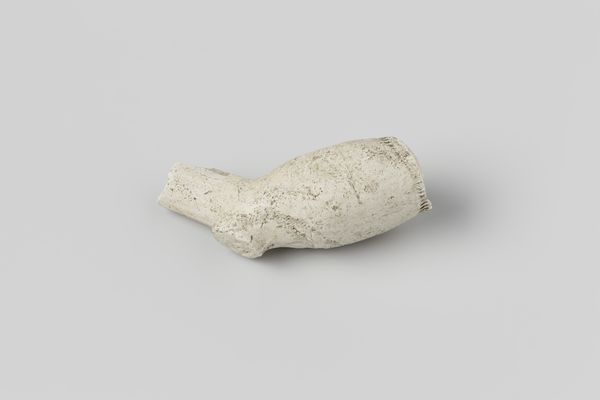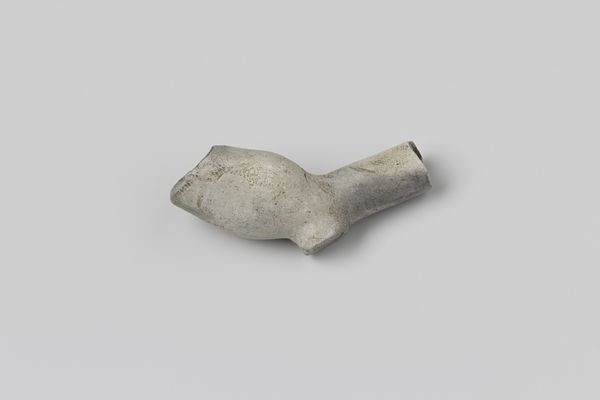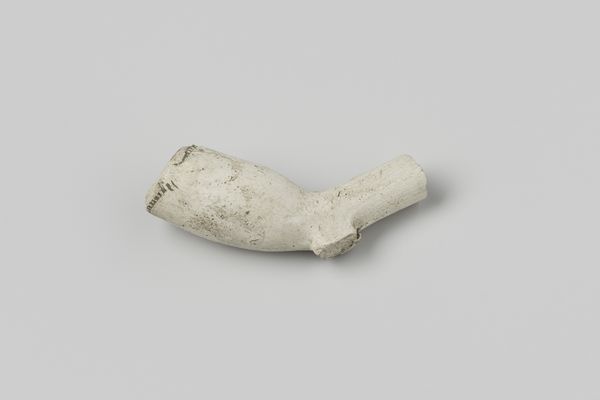
ceramic
baroque
ceramic
Dimensions: length 4.3 cm, width 2.0 cm
Copyright: Rijks Museum: Open Domain
Editor: This is "Fragment Pijpenkop," or "Fragment of a Tobacco Pipe Bowl," a ceramic piece by Jan Fransz. Heeneman, dating from 1740 to 1750. It's a baroque fragment, rough and broken. What symbolic weight do you see in such a simple, yet incomplete, object? Curator: Consider what this object signifies. A pipe wasn't merely for smoking. Think of the rituals around it: sharing, contemplation, perhaps even negotiation. The fragment suggests loss, a rupture in those communal rituals. Does the broken form suggest a societal break, perhaps mirroring a loss of innocence or a disruption in the familiar? Editor: That's interesting. I hadn't thought of the communal aspect so much as the individual one. I focused more on its personal use and subsequent discarding after its usefulness expired. Curator: Perhaps both are true, intertwined like the tobacco strands themselves. Consider the visual weight of absence here – what isn’t there informs what *is* there. This can also hint at vanity. Can’t you see how tobacco would appear in still life paintings as vanitas pieces, reflecting the fleetingness of life? Editor: Definitely. The fragment becomes a memento mori, a reminder of mortality even on such a small scale. Thanks; that gives me a new perspective on baroque art. Curator: It’s amazing to reflect upon cultural memories carried through visual symbolism, don’t you think? Seeing the emotional implications can change the way we appreciate artifacts like these.
Comments
No comments
Be the first to comment and join the conversation on the ultimate creative platform.
